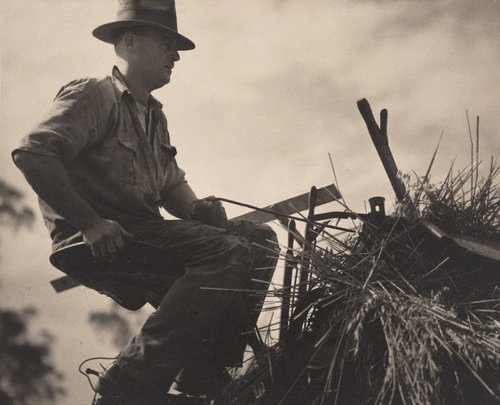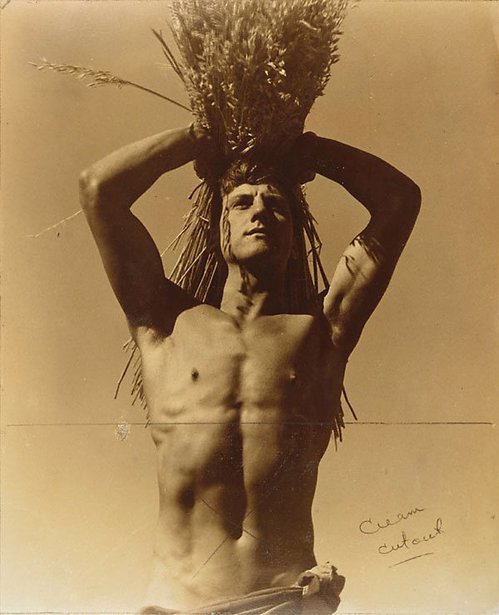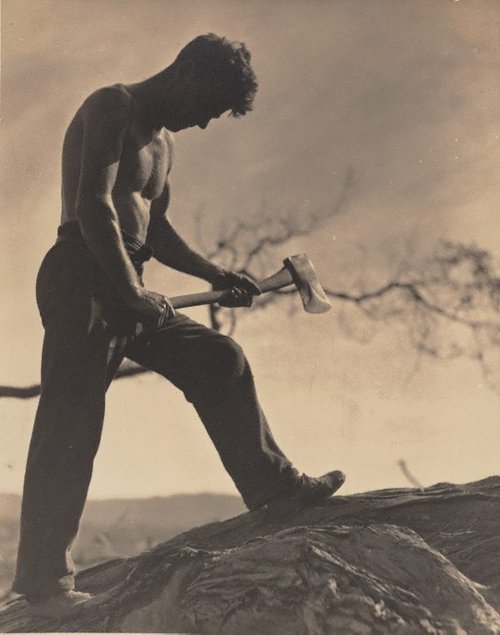-
Details
- Date
- circa 1938
- Media category
- Photograph
- Materials used
- gelatin silver photograph
- Dimensions
- 19.8 x 30.4 cm image; 20.1 x 30.9 cm sheet
- Signature & date
Signed l.r. original mount, pencil "Keast Burke". Not dated.
- Credit
- Gift of Iris Burke 1996
- Location
- Not on display
- Accession number
- 97.1996
- Copyright
- Artist information
-
Keast Burke
Works in the collection
- Share
-
-
About
Keast Burke was a professional photographer, journalist and historian of photography. Born in New Zealand, he arrived in Australia in 1904 and settled in Sydney with his family. After serving in the Middle East during World War I, Burke was made associate editor (under his father Walter Burke) of the Australasian Photo-Review. In 1932 he published ‘Achievement’, a photographic study of the Sydney Harbour Bridge, and in 1938 was elected an associate of the Royal Photographic Society of Great Britain for a portfolio of male figure studies. Burke edited the APR between 1946 and 1956, and in 1943 began to publish a series of articles on early Australian photographers such as John Lindt and Charles Kerry. In 1953 he discovered BO Holtermann’s collection of glass-plate negatives by Charles Bayliss and Beaufoy Merlin, which became the foundation of his 1973 study of gold-mining imagery, ‘Gold and silver’. From 1961 to 1969 Burke was editor and art director of Australian Popular Photography. He was also a consultant to the National Library of Australia and promoted the institution’s acquisition and preservation of historic photographs.
From a contemporary perspective, his images of men at play and at work are unusual in their juxtaposition of animate and inanimate elements. These photographs reflect the ideals and imperatives of the context in which Burke was working, specifically Australian society’s veneration of healthy athletic bodies and lifestyles during the mid-20th century. The style and formal structure of his figure studies, landscapes and still life photographs – with their contrasting tones and formal arrangement – is typical of the aesthetics of New Photography. In his 1932 article ‘Let us have more photography’ published in The Australasian Photo-Review, Burke asserted that ‘the first function of the camera is to record – to see as the eye saw; see more than the eye saw – to give it versatility, to exaggerate detail, to portray surfaces, textures, details, surfaces… It must be ever-busy - at close-up rather than distance - searching out the very quintessence of things, its physical quality.’
-
Exhibition history
Shown in 2 exhibitions
The Image of Man: Photography and Masculinity 1920 to 1950, Art Gallery of New South Wales, Sydney, 07 Feb 1997–06 Apr 1997
The Unflinching Gaze: photo media and the male figure, Bathurst Regional Art Gallery, Bathurst, 13 Oct 2017–03 Dec 2017
-
Bibliography
Referenced in 1 publication
-
Judy Annear and Daniel Mudie Cunningham, The Image of Man, Sydney, 1997.
-




